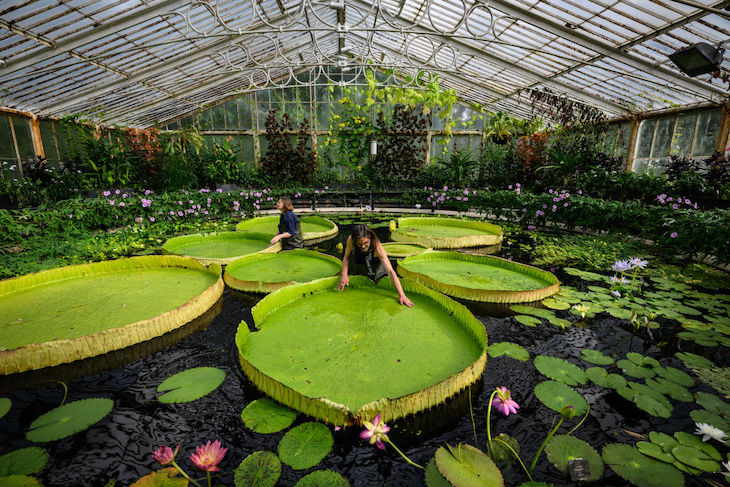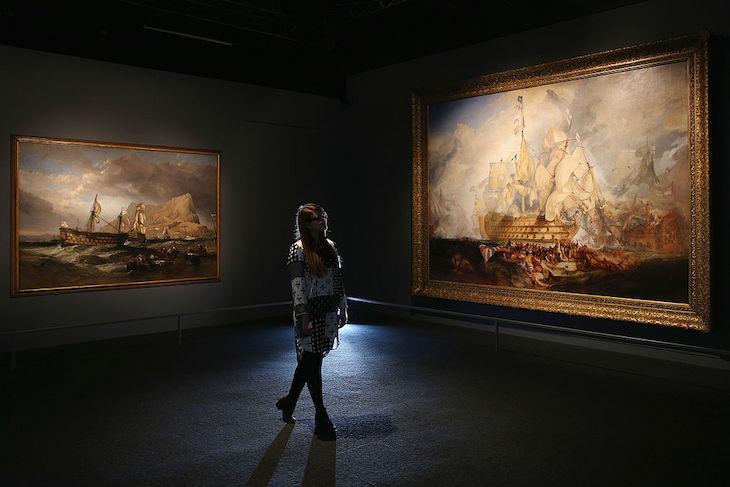History, we’re told, is written by the victors. But nowadays, it seems it’s museum curators who really have the final word. Across the UK, our much-loved national institutions have been led astray by a minority of campaigners, with no regard for the wishes of the public at large. It has become almost impossible to visit a museum in Britain today without coming across a sign or installation condemning several centuries of scholarship in favour of an activist’s manifesto. Curators of various galleries and exhibits impose modern cultural and ethical values on every time period, denigrating those that don’t meet their standards. On the long march through our institutions, it becomes clear that ideology has won. One would never guess that we’ve had a Conservative government for the past thirteen years.
The National Maritime Museum, in Greenwich, was set up to teach people about Britain’s proud naval heritage. But its focus nowadays seems rather more on atoning for the country’s sins. The museum has decided to redevelop its ‘Atlantic Worlds’ Gallery. A sign erected in the centre of the room declares: ‘This gallery no longer reflects the approaches or ambitions of the National Maritime Museum’. Its crime: ‘the legacies of transatlantic slavery are noticeably absent and Black voices are not well represented in the space’. Their website now hosts a ‘re-written interpretation panel for the Atlantic Worlds gallery’, which reads:
‘The slavery that had existed in Africa before the Europeans arrived was not based on the ideology of racialism, but rather, those enslaved tended to be thieves or enemies of differing tribes. The treatment was nowhere as brutal as the Europeans were to the Africans, and many captives could buy back their freedom or earn a small living fee. Herculean African leaders sometimes exchanged enslaved people for goods such as alcohol, beads and cloth, unbeknown to them of the severity of maltreatment their captives would go on to receive.‘
Similarly committed to the principle of ideology before facts, Kew Gardens is currently running an autumn festival celebrating non-binary plants as part of a series of events to ‘celebrate Queer Nature’. No stranger to controversy, the botanical gardens were previously criticised for Politicising Plants after they committed to the ‘decolonisation’ of their collections. While they have since dropped reference to that term, the Gardens are undeniably still committed to an ideological agenda. A statement on their website, published in 2020 but still standing long after their climbdown, states that ‘parts of Kew’s history shamefully draws from a legacy that has deep roots in colonialism and racism’, while Richard Deverell self-flagellates over his status as ‘Kew’s current white, male director’.’
Kew Gardens is currently running an autumn festival celebrating non-binary plants
Before visitors were even permitted to enter the Tate’s Hogarth and Europe exhibition last year, they were met with a sign warning that: ‘This exhibition contains derogatory representations of race, gender, and disability, and addresses themes of racial and sexual violence’. One explanatory note beside a painting reads: ‘dissolute White people correspond with shiny white objects in this scene of domestic disarray’. Another, written from the perspective of a manservant depicted in the frame, declares: ‘The Countess treats me with disdain almost all of the time, but she loves the way I can be a delightful African Gentleman…To her I am simply a Black body rippling with exotic otherness’.
At the British Museum’s exhibition on The World of Stonehenge, a sign entitled ‘gender neutral’ makes the startling claim that:
‘Some objects found exclusively in male or female burials around Stonehenge were combined in a single burial from East Anglia. The dagger, a male symbol, was combined with a knife-dagger, the provision of important women. An amber necklace, usually found in female graves, was placed around the neck. Although the body does not survive, these objects suggest gender rules were being transformed.’
Policy Exchange’s History Matters Compendium, published this week, paints a stark picture of museums across the U.K. tumbling to political pressure. The truth is that we have lost control of our institutions. The raison d’être of the modern museum, which we can trace back to the 1683 foundation of the Ashmolean, in Oxford, was its democratisation of history. For members of the elite classes, it has always been possible to view artefacts in private collections. On the contrary, the modern museum is open to everyone. They are a collective resource, a part of Britain’s shared inheritance. However, this is increasingly no longer the case as Britain’s museums bend to the will of a small minority of powerful activists with total disregard for the views of the broader public.
These decisions are being taken with no regard for popular sentiment. Polling shows that 69 per cent of people are proud of the UK; 65 per cent feel it’s ‘unfair to make judgements about the past based on today’s values’ and 77 per cent think that ‘we should learn from history rather than try to re-write it’. It is time for museums to listen to their visitors, not the vocal campaign groups who wish to denigrate and co-opt the past for their own ends.

These examples are not unusual or rare. Complete institutional capture guarantees that if you visit a museum this weekend you will almost certainly be confronted with a curatorial intervention warning you of the ‘racism’, ‘sexism’, or ‘transphobia’ one might find in the past. The chosen examples do however all have one thing in common: they are institutions that are funded and overseen by the government. The British Museum, Tate Britain, and Maritime Museum are all managed by the Department for Digital, Culture, Media and Sport. The Department for Environment, Food & Rural Affairs have statutory oversight over Kew. They all receive money from the taxpayer. Where are the ministers? Why have they allowed these valued institutions to slip deeper and deeper into politicisation without so much as a word of outcry?
The governing structures of these museums rely on ministers to safeguard history when it comes under threat. Unfortunately, changes to trustee appointments have made this increasingly difficult. Long and bureaucratic processes mean that captured departmental civil servants will often manage the appointment process, not the minister themself. Even when strong trustees are appointed, they are not trained in how to stand up to activist curators. What’s more, museums often keep their trustee body at arm’s length, making huge curatorial decisions without their oversight knowledge.
It should not be necessary for government ministers to intervene in the affairs of institutions, but such measures are required when the founding purpose of those institutions has been compromised. Trustee bodies are appointed by ministers to protect and display our nation’s past. However, in recent years these bodies have failed in this mission. We’ve fallen asleep at the wheel and our institutions are suffering for it. Trustees must step up to defend history. They must intervene on blatantly political decisions and prevent ideology from being taught as fact. When they fail to do so, our elected Secretaries of State should be holding institutions to the standard the public quite rightly expects. Our national heritage is far too precious. We cannot allow it to be lost.
Lara Brown is a Research Fellow at Policy Exchange






Comments